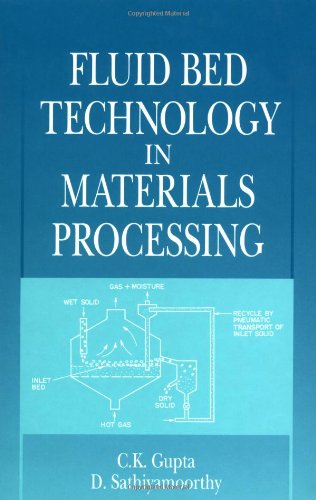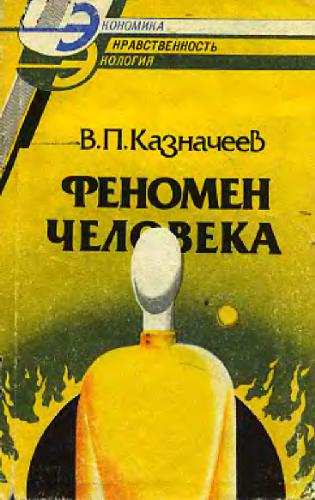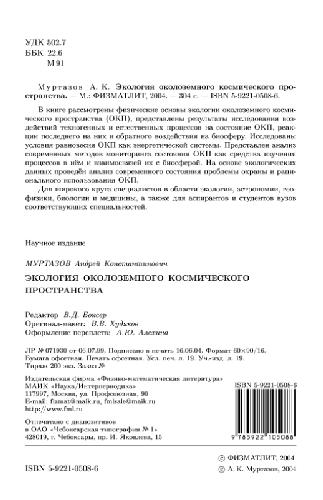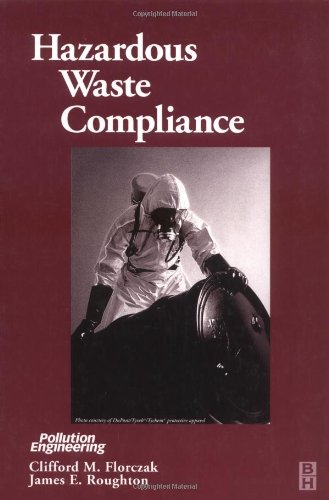C. K. Gupta, D. Sathiyamoorthy9780849348327, 0849348323
Table of contents :
Fluid Bed Technology in Materials Processing……Page 1
Preface……Page 4
Foreword……Page 3
Dedication……Page 6
Acknowledgments……Page 7
The Authors……Page 8
Table of Contents……Page 9
A. Fluidlike Behavior……Page 26
Table of Contents……Page 0
1. Gas/Liquid Flow……Page 27
4. Bed Pressure Drop……Page 29
D. Disadvantages of Fluidized Bed……Page 31
2. Definition……Page 32
4. Roughness……Page 35
3. Polydisperse System……Page 36
4. Container Effect……Page 37
a. Density……Page 38
1. Geldart Groups……Page 39
2. Molerus Groups……Page 42
3. Clark et al. Groups……Page 43
4. Dimensionless Geldart Groups……Page 44
B. Hydrodynamics- and Thermal-Properties-Based Groups……Page 46
D. Varieties of Fluidization……Page 47
a. Pressure Drop Method……Page 49
a. Dimensional Analysis (Direct Correlation)……Page 50
b. Drag Force Method……Page 51
c. Pressure Drop Method……Page 54
d. Terminal Velocity Method……Page 57
1. Definition……Page 59
2. Mathematical Representation……Page 60
a. Evaluation of Drag Coefficient……Page 61
4. Terminal Velocity for Single Spherical Particle……Page 62
5. Difficulties in Predicting Particle Terminal Velocity……Page 63
6. Some Advances in Predicting Particle Terminal Velocity……Page 66
a. Common Procedures……Page 68
b. Relative Methods……Page 69
A. Particulate and Aggregative Fluidization……Page 71
1. Bubbling Bed……Page 73
2. Turbulent Bed……Page 74
5. Flow Regime Mapping……Page 76
A. Introduction……Page 77
B. Classification……Page 78
2. Countercurrent Flow……Page 79
1. Parameters……Page 80
2. Pressure Drop and Holdup……Page 81
3. Holdup Determination by Experiments……Page 83
D. Turbulent Contact Absorber……Page 84
A. Introduction……Page 86
b. Unsteady State……Page 87
1. Film Model……Page 88
D. Predictions of Heat Transfer Coefficient……Page 89
a. Particle-Convective Component……Page 90
c. Radiative Component……Page 92
2. Overall Heat Transfer Coefficient……Page 93
2. Horizontal Surfaces……Page 94
b. Flow Regime Effect……Page 95
2. Optimum Velocity……Page 96
3. Distributor Effects……Page 98
1. Differences with Gas-Solid Systems……Page 100
1. Heat Transfer Coefficient……Page 101
3. Correlation……Page 102
a. Correlations……Page 103
b. Influencing Parameters……Page 104
a. Comparison of Mass Transfer from Single Particle and Fixed Bed to Fluid……Page 105
c. Correlations……Page 106
d. Height of Transfer Unit……Page 107
f. Experimental Technique……Page 108
a. Gas-Exchange Hypothesis……Page 109
b. Gas Exchange Between Lean and Dense Phases (Two-Phase Model)……Page 110
c. Measurement of Gas-Exchange Rate……Page 111
e. Mass Transfer Derived from Bubbling Bed Model……Page 112
1. Driving Forces……Page 114
b. Measurement Techniques……Page 115
a. Effect of Flow Regimes……Page 116
b. Effect of Properties of Gas and Liquid……Page 117
d. Effect of Bubble Population……Page 118
1. Introduction……Page 119
b. Correlations……Page 120
c. Density Near the Grid……Page 121
3. Dead Zone……Page 122
a. Prediction by Bubble Dynamics Method……Page 124
b. Prediction by Mass Balance Method……Page 126
d. Complexity of Parameter Determination……Page 128
4. Transport Disengaging Height……Page 129
Nomenclature……Page 130
Greek Symbols……Page 135
References……Page 137
1. Classification……Page 152
2. Description of Dryers……Page 153
1. Drying Rate……Page 156
2. Moisture Transport……Page 158
1. Well-Mixed Type……Page 159
2. Plug Flow Type……Page 160
b. Mass (Moisture) Transport……Page 161
c. Moisture at the Surface of the Particle (CsR)……Page 162
e. Overall Mass Balance of a Fluid Bed Dryer……Page 163
g. Constraints……Page 164
1. Basics……Page 165
a. Gas Velocity……Page 166
F. Spouted Bed Dryer……Page 167
2. Inert Solid Bed……Page 169
b. Residence Time……Page 170
1. Iron Ore Drying……Page 171
2. Early Fluid Bed Roasters……Page 173
1. Commercial Plants……Page 175
a. Variables Selection……Page 177
4. Design Data……Page 179
1. Sulfation Principles……Page 180
a. Iron, Nickel, and Copper Concentrates……Page 183
b. Cobaltiferrous Pyrite……Page 184
1. Importance……Page 185
3. Reaction……Page 186
b. Two-Phase Reactor……Page 187
2. Other Processes……Page 188
2. Pyritic Gold Ore……Page 189
1. Operation……Page 190
A. Definition……Page 191
1. Limestone……Page 192
a. Circulating Fluidized Bed……Page 193
4. Alumina……Page 194
a. Chloride Waste……Page 195
C. Some Useful Hints on Fluid Bed Calcination……Page 196
1. Advent of the Fluid Bed……Page 197
a. H-Iron Process……Page 198
d. Other Reduction Processes……Page 199
b. Reductants……Page 201
c. Mechanism……Page 203
4. Sulfur Control……Page 204
2. Two-Stage Process……Page 205
1. Metal Powder Production……Page 206
b. Nickel and Titanium Powders……Page 207
d. Recommendations……Page 208
3. Chloride Metallurgy……Page 209
1. Metal Oxide Chlorination……Page 211
a. Reaction……Page 212
d. Models……Page 213
b. Direct Chlorination……Page 214
d. Models……Page 215
b. General Studies……Page 216
d. Chlorination Results……Page 217
e. Direct Chlorination of Zircon……Page 218
a. Columbite Chlorination……Page 219
a. Chlorosilane……Page 220
a. Toth Process……Page 221
b. Chlorination Studies……Page 224
Nomenclature……Page 225
Greek Symbols……Page 226
References……Page 227
1. General Description……Page 236
B. Design Aspects of Leaching Column……Page 237
b. Multistaging……Page 240
1. Thermal Decomposition of Uranyl Nitrate……Page 242
a. Calcination……Page 244
c. Denitration Unit……Page 245
1. Oxides of Uranium……Page 247
a. Oxide Criteria……Page 248
c. Reduction Criteria……Page 249
d. Fluid Bed Reduction……Page 250
1. Reaction……Page 251
2. Fluid Bed Hydrofluorination……Page 252
b. Flame Reactor……Page 254
a. Uranium Tetrafluoride Fluorination……Page 255
b. Direct Fluorination……Page 256
d. Parameters Influence……Page 257
e. Reaction Rate……Page 258
4. Reactor Control……Page 259
1. Reaction……Page 261
c. Bed Depth Effect……Page 262
1. Uranium Carbide as Nuclear Fuel……Page 263
2. Reaction……Page 264
a. Feed and Gas……Page 265
d. Other Carbides……Page 266
a. Reactor……Page 267
c. Carburizing Agent……Page 268
e. Recommendations……Page 269
1. Appraisal……Page 270
b. Reaction Steps……Page 271
2. Immersed Objects……Page 273
1. Nonmetallic Coating……Page 276
b. Silicon Carbide……Page 277
b. Coating Properties……Page 278
c. Recommendations……Page 279
2. Fluid Bed……Page 280
1. Methods……Page 281
b. Nonaqueous Methods……Page 282
c. Combined Methods……Page 283
b. Fluid Bed……Page 284
2. Oxide Fuel……Page 285
3. Carbide Fuel……Page 286
b. Organic Wastes……Page 287
1. Constraints……Page 288
1. Off-Gas……Page 289
D. Reclamation from Waste……Page 290
Nomenclature……Page 291
References……Page 292
a. Charged Particle……Page 298
c. Plasma Systems……Page 299
2. DC and AC Discharges……Page 300
a. Selection Criteria……Page 302
b. Properties……Page 304
3. Power Source……Page 305
A. Categories……Page 306
a. Short Residence Time……Page 307
c. Long Residence Time……Page 308
B. RF Plasma Furnace……Page 309
1. Heat Transfer to Solid……Page 310
a. Description……Page 311
b. Testing……Page 312
2. Inductively Coupled Plasma Fluid Bed……Page 314
1. Interparticle Forces and Minimum Fluidization Velocity……Page 315
a. Tests……Page 316
b. Results……Page 317
a. Tests……Page 318
a. Plasma Gas Temperature……Page 320
a. Reactor……Page 321
b. Methane Decomposition Studies (DC Plasma)……Page 322
d. Local Characteristics……Page 323
6. Radially Coalesced Plasma……Page 325
1. Gas-Solid Feeding……Page 326
2. Feeder Types……Page 327
A. Scope of Plasma Application in Extractive Metallurgy……Page 328
a. Spheroidizing……Page 329
b. Coating……Page 330
a. Fine Powders……Page 331
b. Particle Nitriding……Page 332
1. Spout Fluid Bed Reactor……Page 334
1. Carbothermy……Page 335
3. Gasification……Page 336
2. Advantages……Page 337
3. Configurations……Page 338
2. Furnace Details……Page 340
b. Gas-Solid System……Page 341
d. Ohmic Law……Page 342
e. Model for Bed Resistance……Page 343
3. Effect of Particle Size……Page 344
4. Effect of Bed Voidage……Page 345
5. Resistivity and Bed Status……Page 347
6. Effect of Particle Shape……Page 348
8. Effect of Bed Height and Diameter……Page 349
9. Effect of Temperature……Page 350
10. Effect of Pressure……Page 353
11. Contact Resistance……Page 355
12. Effect of Distributor……Page 356
13. Effect of Nonconducting Solids……Page 357
2. Temperature Range……Page 358
3. Limiting Cases……Page 359
E. Power Loading and Control……Page 360
F. Electrically Stabilized versus Electrothermal Fluidized Bed……Page 361
1. General……Page 362
3. Chlorination……Page 363
b. Zircon Chlorination……Page 364
Nomenclature……Page 365
References……Page 367
1. Range……Page 376
c. Grid/Distributor Pressure Drop Criterion……Page 377
d. Critical Grid Resistance Ratio……Page 379
D. Operating Velocity Under Condition of Particle Attrition or Agglomeration……Page 380
2. Operating Velocity at a Desired Solid Weeping Rate……Page 381
F. Operating Velocity Based on Maximum Bubble Size……Page 382
2. Optimum Velocity……Page 384
1. Stoichiometric Considerations……Page 385
2. Conversion Consideration……Page 386
B. Distributor Effect……Page 387
D. Key Influencing Parameters……Page 388
A. Introduction……Page 389
1. Hydrodynamic Factors……Page 390
2. Interfacial Area Factor……Page 391
b. Three-Phase Fluidization……Page 392
1. Conventional Distributors for Gas or Liquid……Page 393
2. Improved Gas-Liquid Distributors……Page 394
3. Common Distributors for Gas and Liquid……Page 395
4. Advanced Gas-Liquid Distributors……Page 396
b. Low-Pressure-Drop Distributor……Page 397
a. General Rule……Page 398
d. Operation of Gas-Issuing Ports……Page 399
3. Prediction of Pressure Drop Ratio……Page 400
a. Tuyeres Operation……Page 401
b. Multiorifice Plate……Page 402
c. Recommendations……Page 403
1. Kinetic Approach……Page 404
a. Ratio of Pitch to Orifice Diameter……Page 405
b. Guidelines for Fixing Ratio of Pitch to Orifice Diameter……Page 407
c. Multiple Choices for Operation and Selection of Ratio of Pitch to Orifice Diameter……Page 408
4. Distributor for Three-Phase Fluidization……Page 409
B. Plenum Chamber……Page 411
C. Pumping Energy……Page 412
A. Introduction……Page 413
2. Main Bubbling Bed……Page 414
3. Freeboard Zone……Page 415
B. Some Basic Aspects of Modeling……Page 416
1. Two-Phase Model……Page 417
2. Bubbling Bed Models……Page 420
C. Model Types……Page 421
1. Davidson and Harrison Model25……Page 425
2. Kunii and Levenspiel Model……Page 429
3. Kato and Wen Model124……Page 430
4. Partridge and Rowe Model……Page 432
5. Comparison of Models……Page 434
E. Some Modern Models……Page 436
1. Werther Model……Page 438
2. Fryer and Potter Model……Page 440
4. Slugging Bed Models……Page 441
5. Stochastic Model……Page 443
7. Fluidized Bed Reactor Efficiency……Page 444
Nomenclature……Page 446
Greek Symbols……Page 449
References……Page 450
1. Introduction……Page 459
2. Basics……Page 460
3. Characteristics……Page 461
1. Description……Page 462
b. Maximum Semifluidization Velocity……Page 464
d. Limiting Factors and Applications……Page 465
1. General Description……Page 466
2. Hydrodynamics……Page 467
3. Minimum Spout Fluidizing Velocity……Page 468
5. Draft Tube……Page 469
2. Basics……Page 470
1. Interconnected Operation……Page 472
2. Compact Twin Beds……Page 473
4. Application……Page 474
1. Need for Fluidized Electrodes……Page 475
2. Description……Page 476
5. Selection……Page 477
1. Criteria for Cell Geometry……Page 478
2. Anode Chamber and Electrolyte……Page 479
3. Construction……Page 480
2. Potential and Current Distribution……Page 481
3. Charge Transport……Page 482
a. Model Development……Page 483
5. Current Feeder……Page 484
1. Role of the Third Phase……Page 485
b. Third-Phase-Generated Type……Page 486
1. Fluidized Bed Electrodes in Copper Extraction……Page 487
2. Fluidized Bed Electrodes in Nickel Extraction……Page 488
a. Cobalt……Page 489
b. Silver……Page 490
c. Zinc……Page 491
4. Fluidized Bed Electrodes in Aqueous Waste Treatment……Page 492
5. Miscellaneous Applications……Page 493
A. Introduction……Page 494
2. Mineral and Metal Extraction……Page 495
1. Requirements……Page 498
2. Types……Page 499
3. Fluidized Bed Bioreactors……Page 502
Nomenclature……Page 504
Greek Symbols……Page 505
References……Page 506







Reviews
There are no reviews yet.